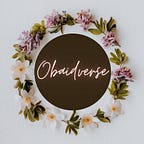Pioneers of Oil Painting in the 14th and 15th century Flanders
During the 14th century, tempera was the conventional material for paintings. It consisted of an egg mixed with a wet paste of ground pigment. The material gave a velvety sheen to the images of that era. Oil painting was used as far back as the 8th century, but its widespread application is observed in paintings of the early 15th century. Oil paints were extensively mixed with tempera in this early period by Flemish artists, and the technique was soon adopted by Italian painters.
With the discovery of better drying components in the early 15th century, the setting capabilities of oil paints were enhanced, leading to their widespread application in paintings. Unlike tempera, the oil dries uniformly and slowly. Oil Painting is an evident technique in the work of Flemish masters Robert Campin and Jan van Eyck and Italian Leonardo da Vinci. Leonardo widely used oil paints to blend pigments and create his iconic smoky effect in some of the most famous paintings of that time, including the famous Mona Lisa painting (Kleiner, Fred S. Gardner’s Art through Ages: A Global History).
Painters like Rogier van der Weyden and Hugo van der Goes had widespread fame beyond the borders of their motherland. Their oil painting presented a glazing effect giving their paintings a blend of pigments. This technique is also evident in masterpieces like Virgin and Child with Saints Catherine of Alexandria and Barbara by Jan van Eyck, Petrus Christus’ Portrait of a Carthusian, or Hans Memling’s Virgin (Ashrafian 145).
The capability of oil painting to glazing brown or earth pigments over a vast area is evident in Robert’s Campin Merode Triptych. The scene of Saint Joseph in the workshop is a hallmark of this technique. Oil paint is variable in that it can be used in both thick paste and fine detail, allowing for a wide range of brushstrokes (Engler 53). Giving textural differences in oil painting was considered an innovation, and it is evident in Jan Van Eyck’s Van der Paele Virgin.
The contribution of Flanders to arts and crafts cannot be overlooked while discussing paintings in the 14th and 15th centuries. Some painters went for a mix of oil painting and other techniques to create masterpieces that are alive today, while others derived various techniques in oil painting to create beautiful effects.
